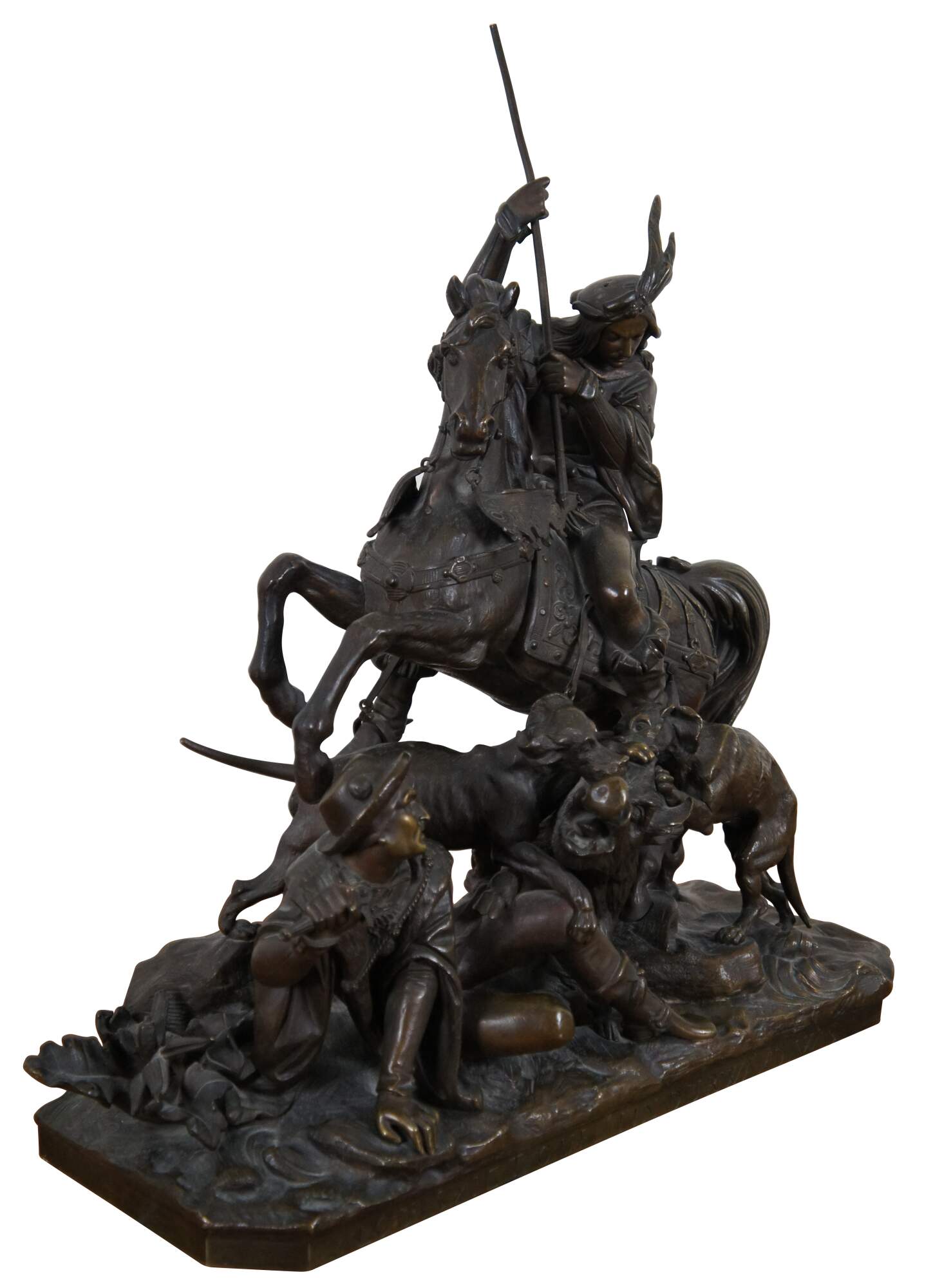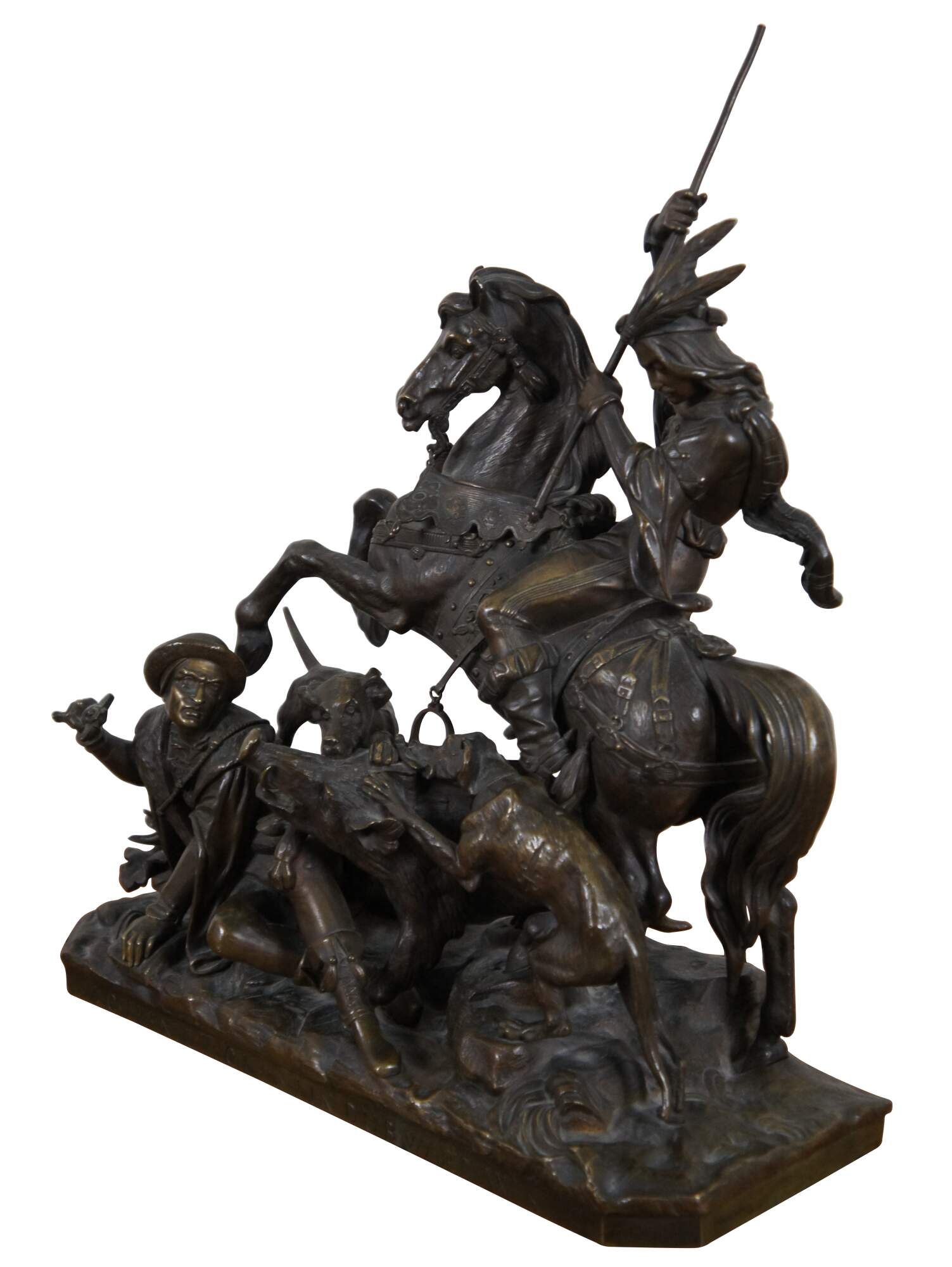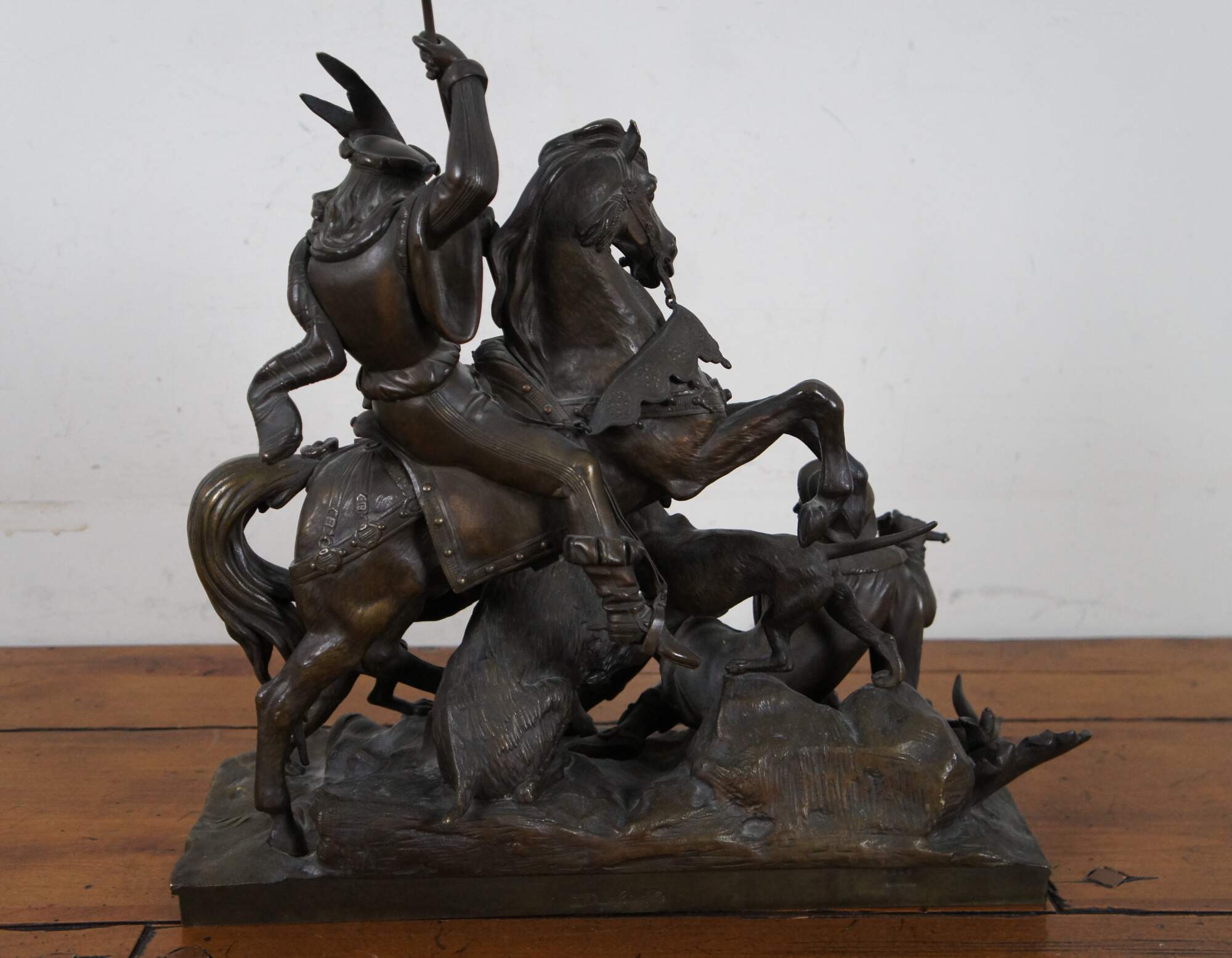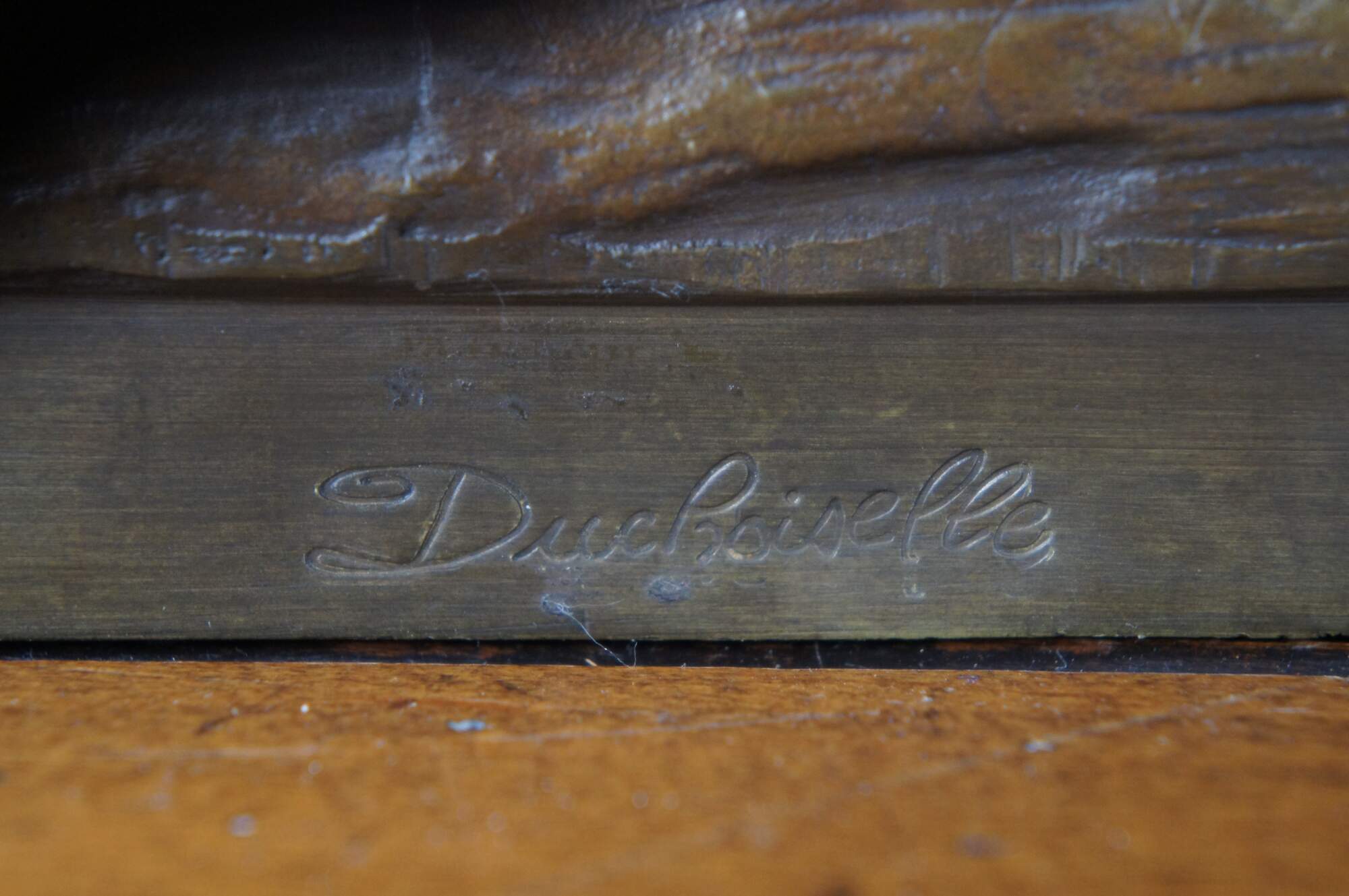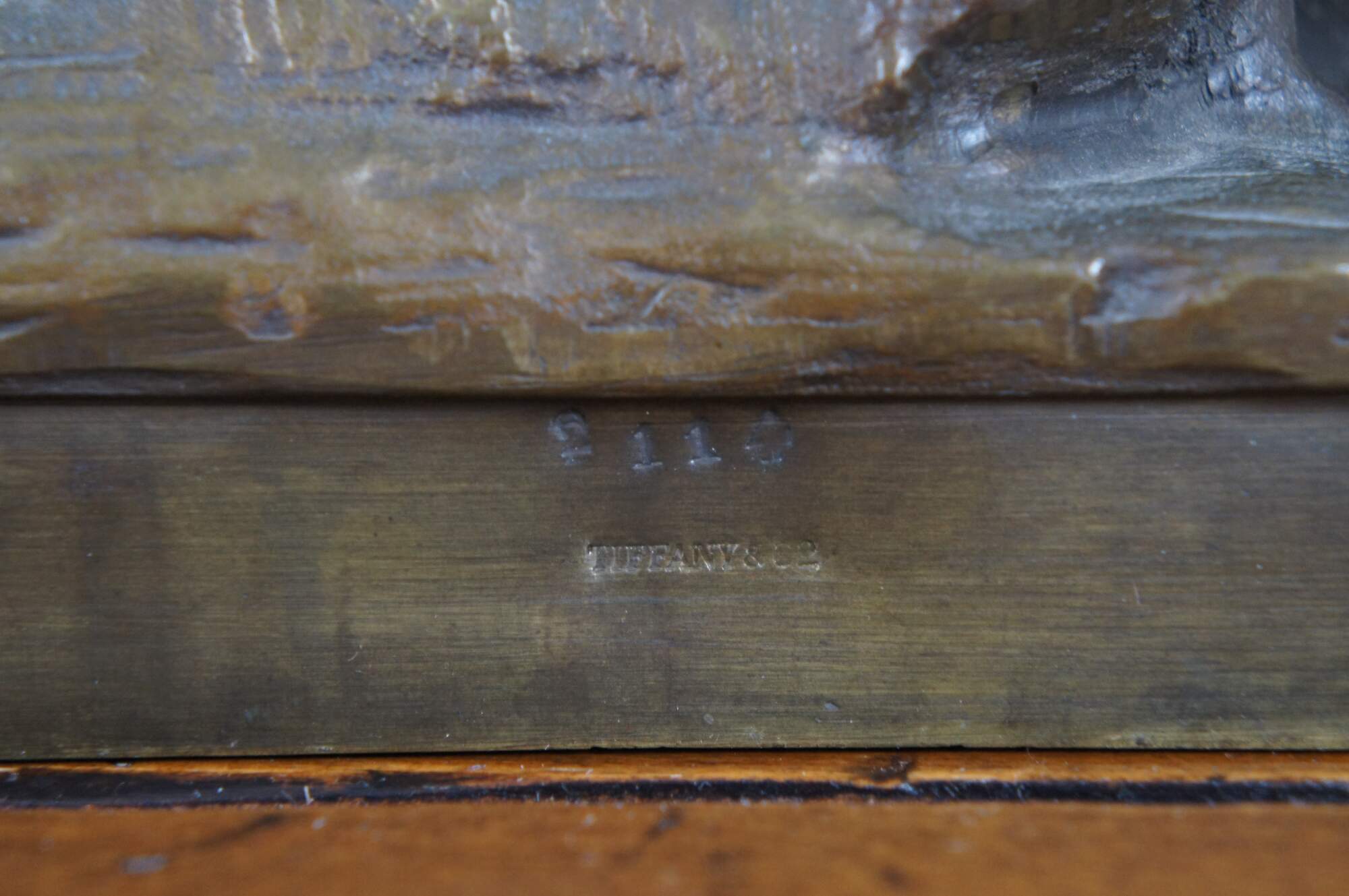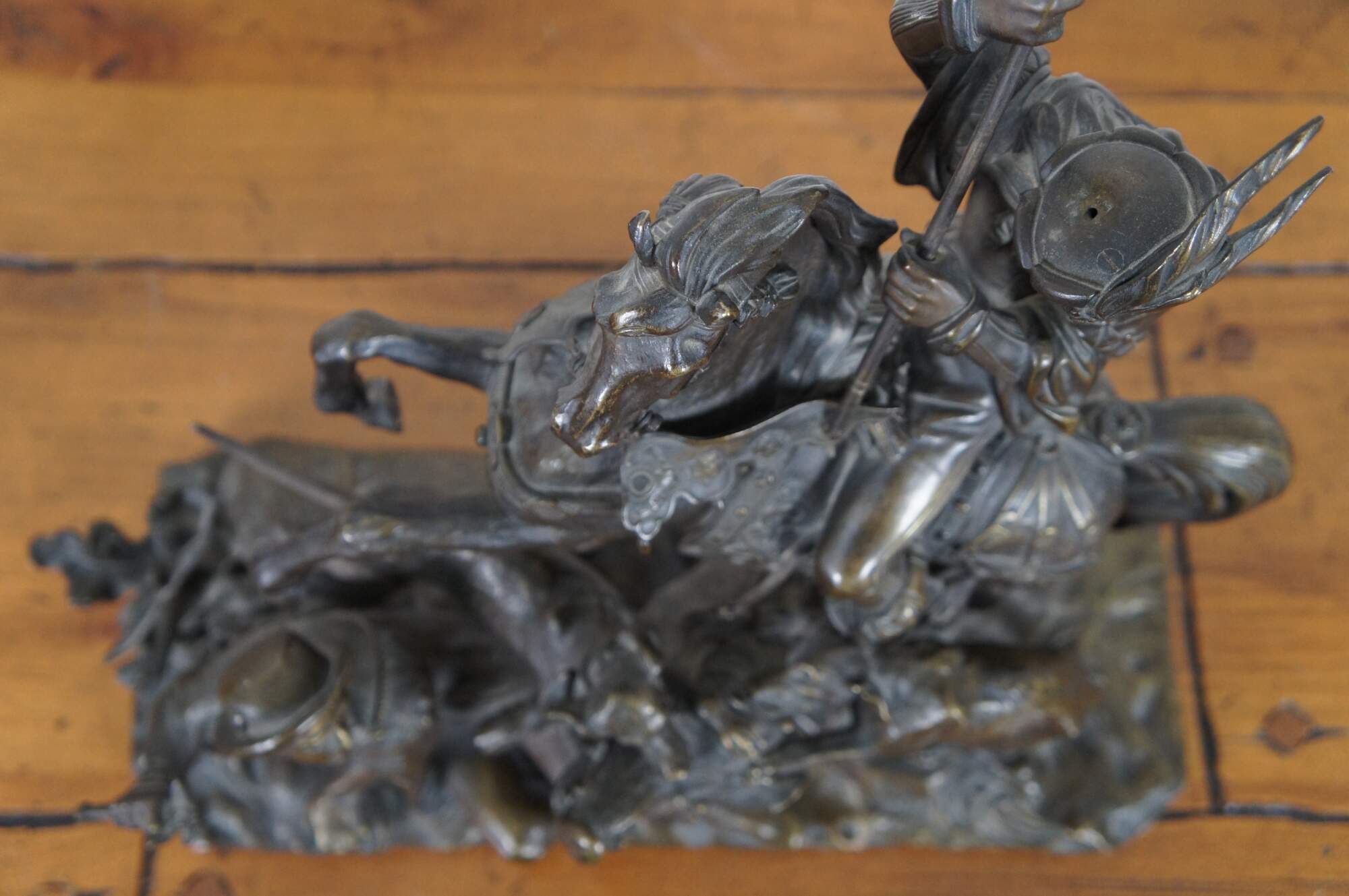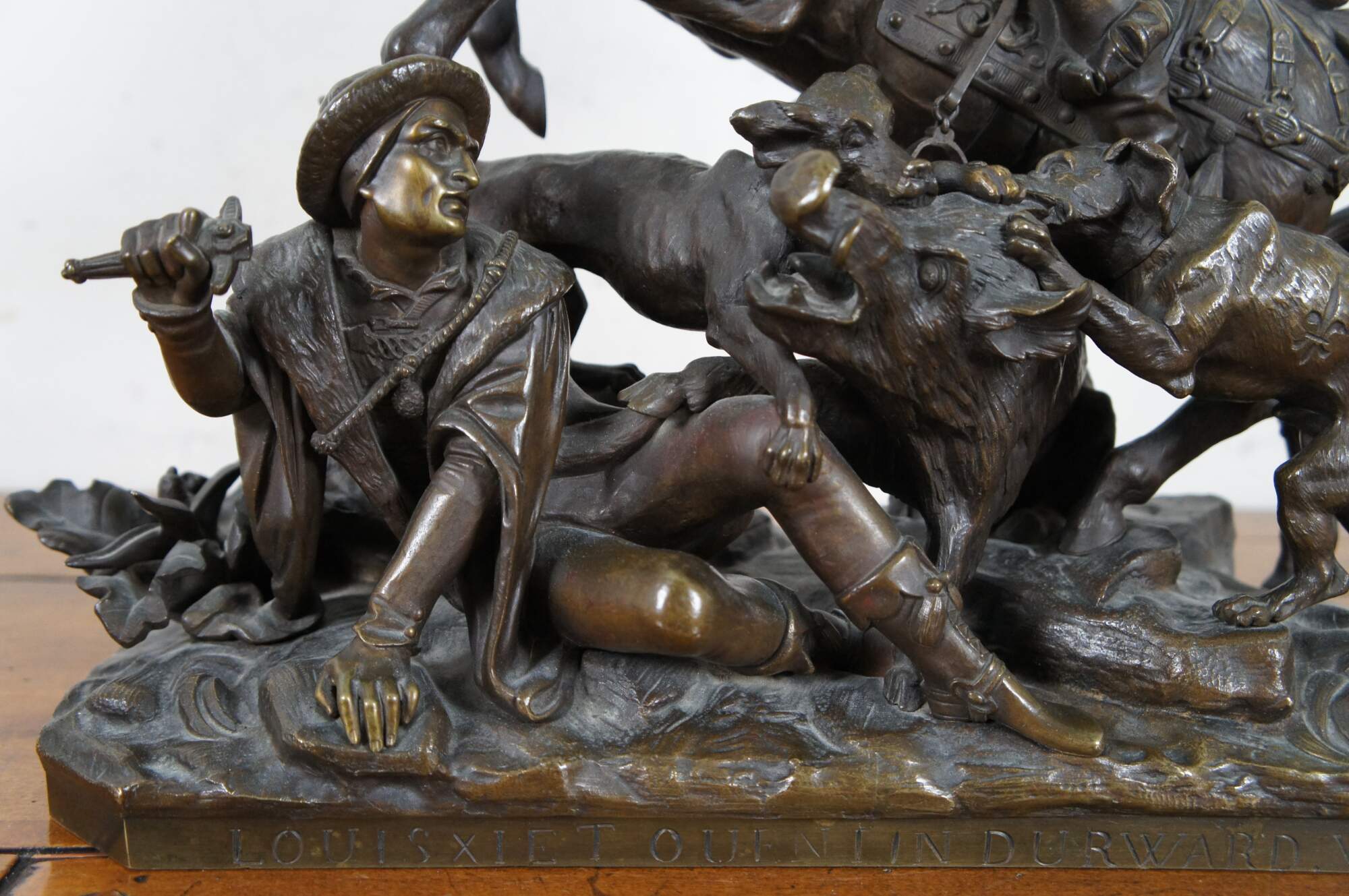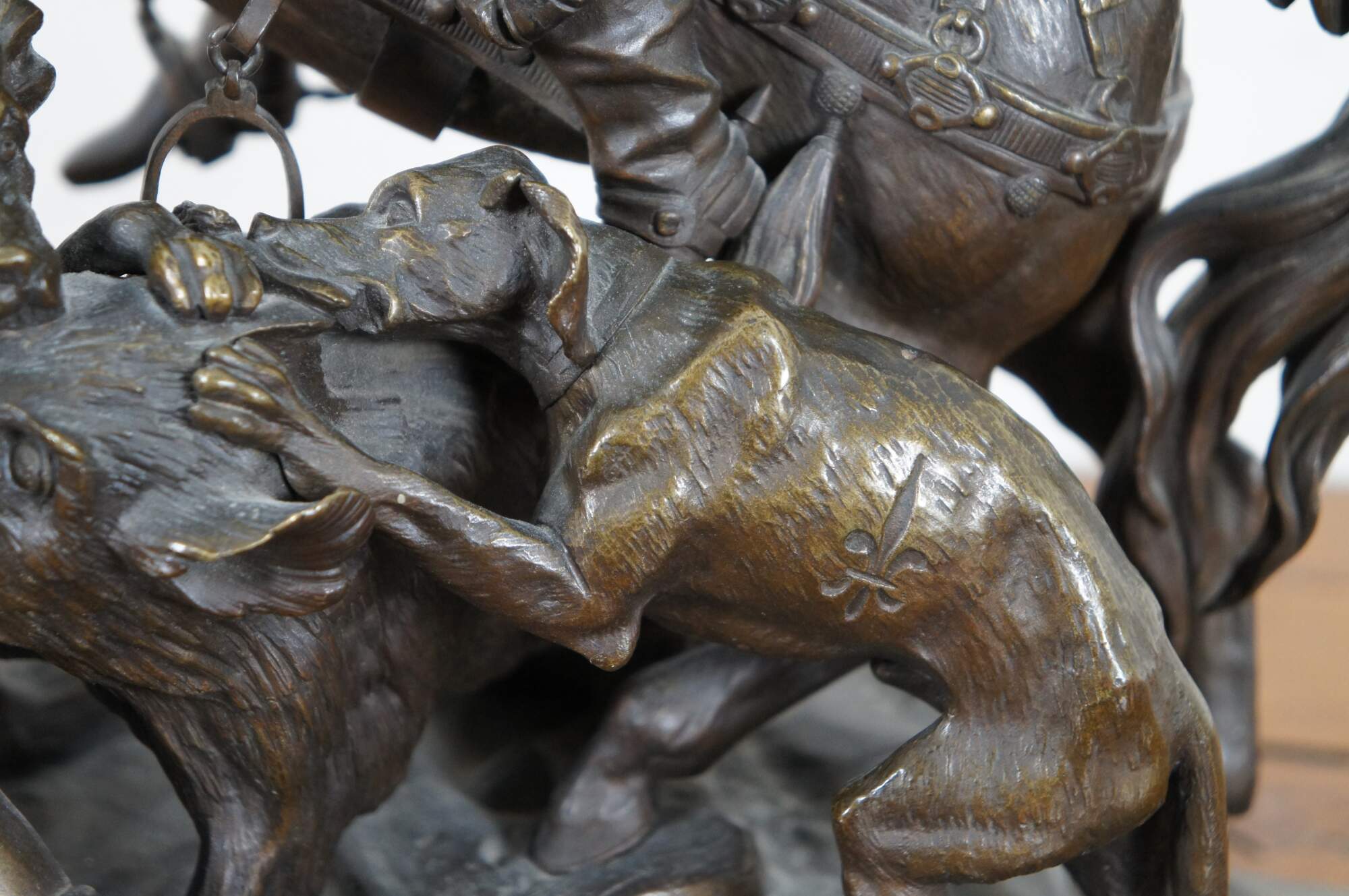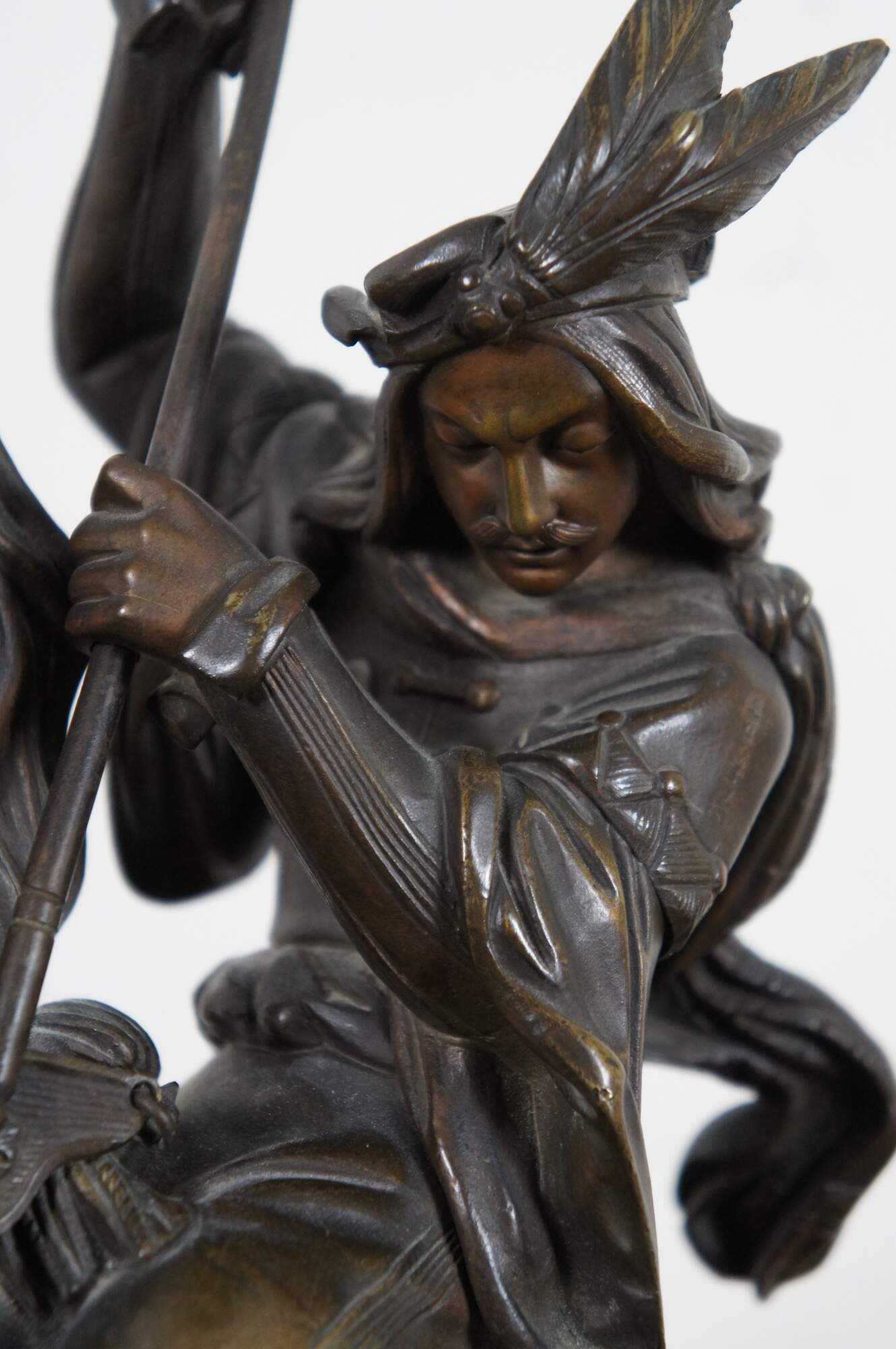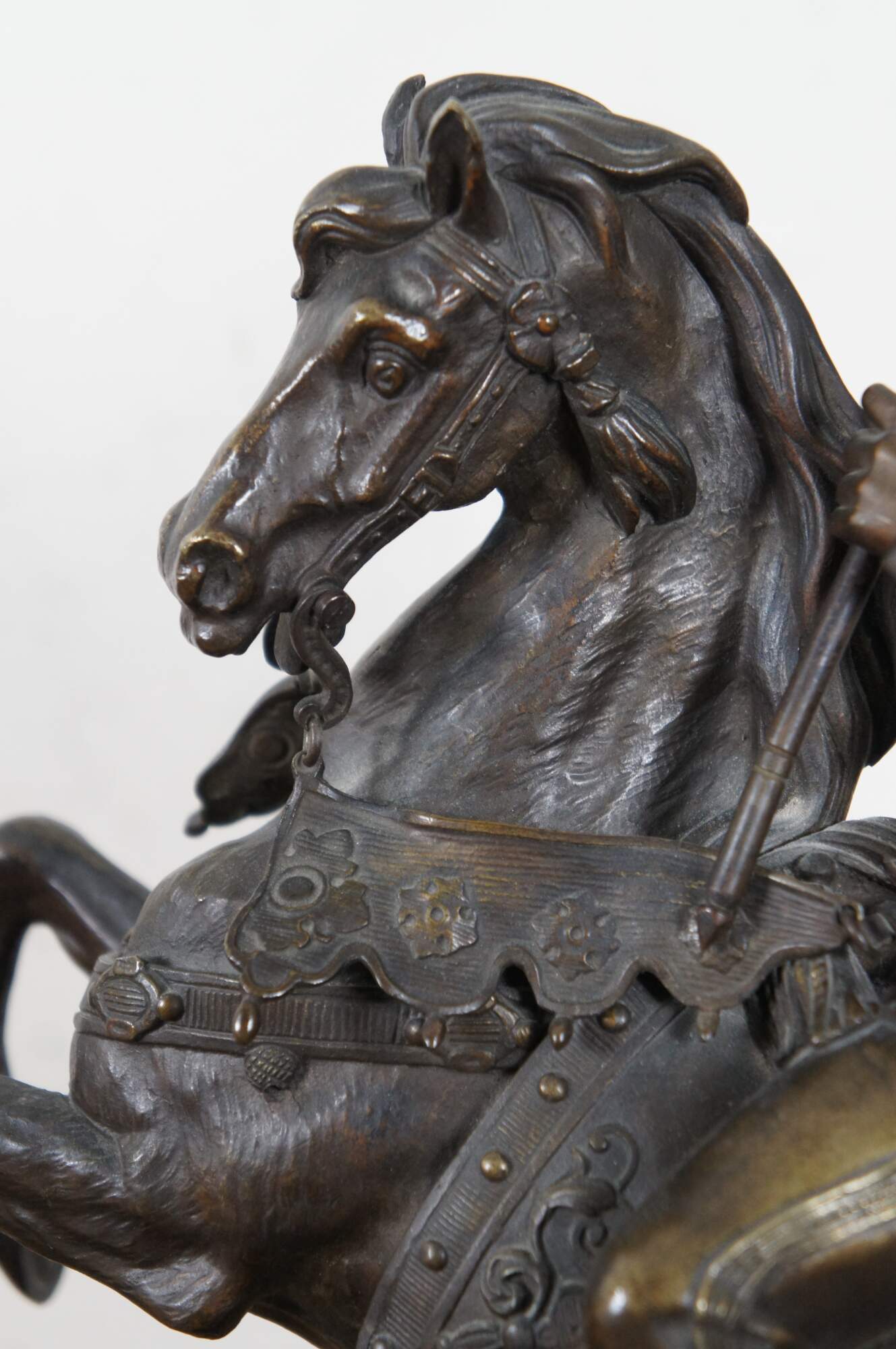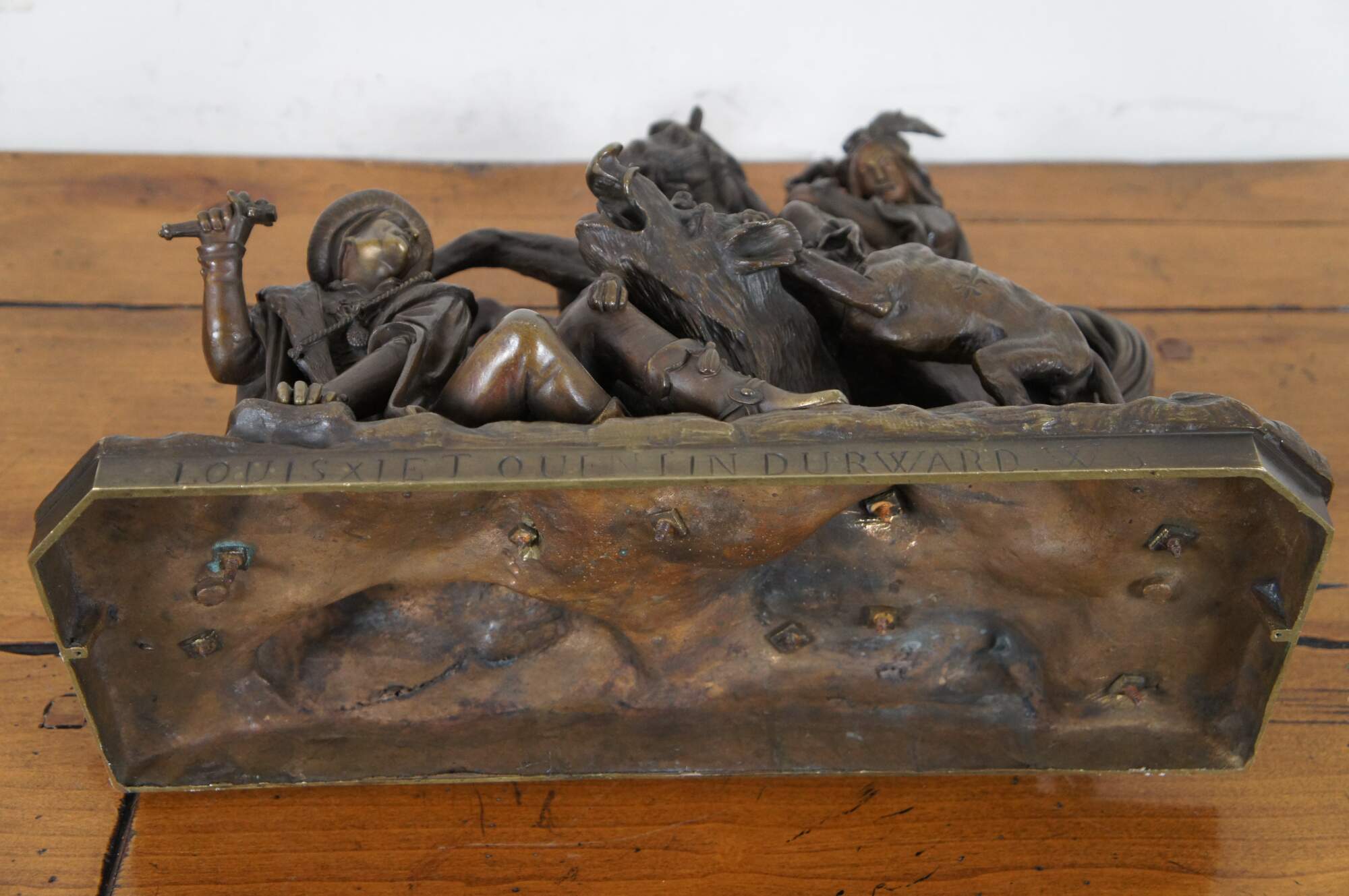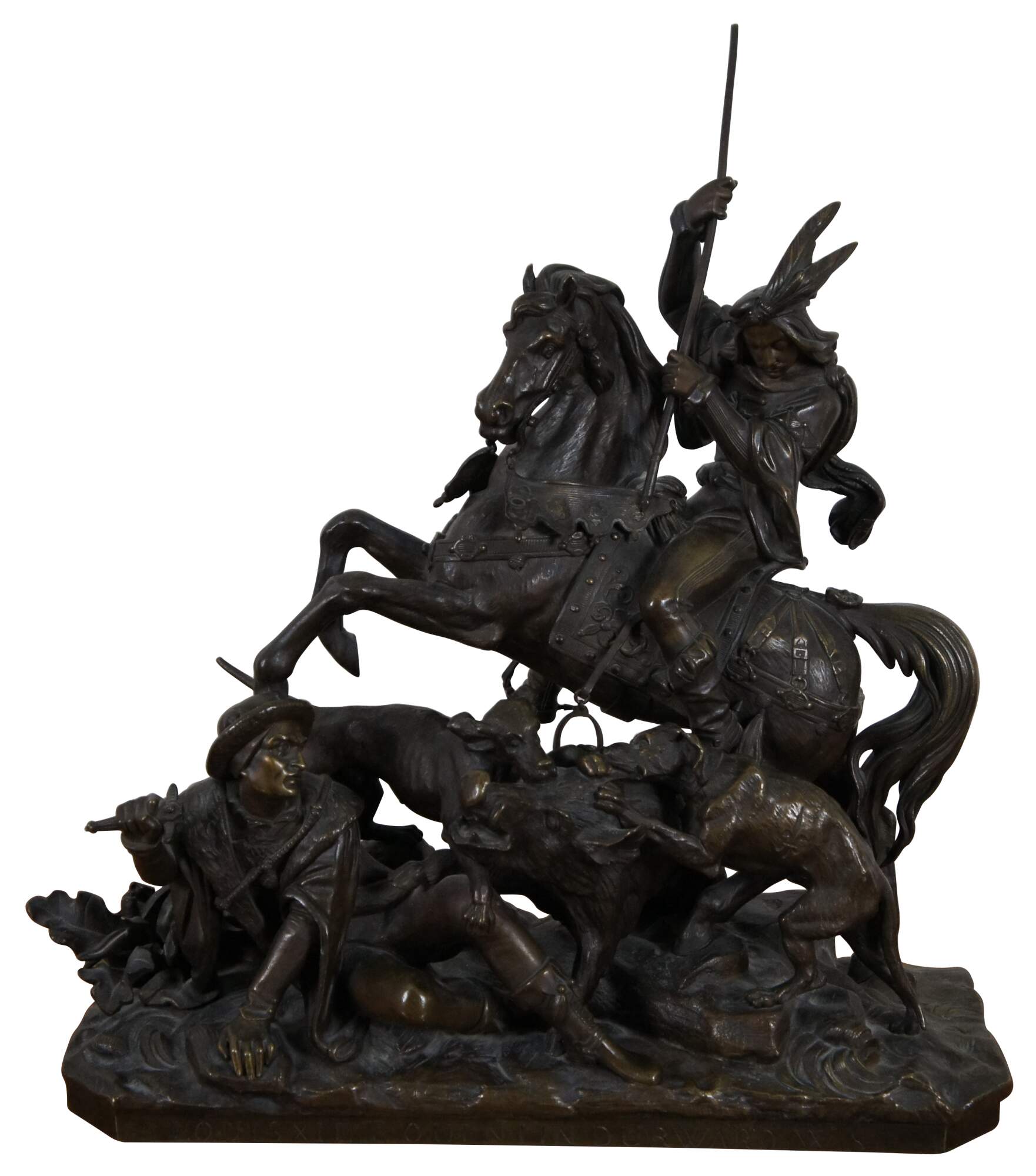
Tiffany Co Duchoiselle Hunt Bronze Louis XI Quentin Durward Théodore Gechter 18"
$9,200.00
Shipping:
Free Shipping Included
Delivery:
Estimated 2-15 Business Days
Payments:
Credit Card, Check, Cash, PayPal, Apple Pay, Venmo
Returns:
30 Days 100% Money Back Guarantee, Buyer Pays Return Shipping
Description
Antique Tiffany & Co number 2114 bronze sculpture portraying a scene from Quentin Durward. Written by Walter Scott and published in 1823, Quentin Durward is the story of a young Scottish archer who journeys to France and upon meeting Louis XI enters the service of the monarch. The novel was immensely popular in both France and Britain. Gechter depicts the moment when Durward saves Louis whilst out hunting. Louis has dismounted to attack the boar, but slips in the mud. Durward, responding to the call of Louis' hunting horn, is on hand to spear the boar, thus winning Louis' favour. Originally designed by Jean-François-Théodore Gechter, this sculpture is signed on the reverse edge Duchoiselle and marked Tiffany & Co 2114.
Active in the second half of the 19th century, Duchoiselle was a French sculptor primarily known for his ceiling works in the Louvre, his works in L'Hotel de Brienne, the Palais Garnier Opera in Paris and his bronze sculptures of native Americans.
“Jean-François-Théodore Gechter (1795, Paris - 1844, Paris) was a French sculptor. A student of François Joseph Bosio and baron Gros, he is now most noted for his bronzes. He first exhibited in 1824, in a show of classical and mythological subjects. From 1830 he shifted to smaller sculptures and animal subjects, like Antoine-Louis Barye, another student of Bosio and Gros. He also had a talent for historical scenes with figures in elaborate costumes.
Gechter's penchant and gift in depicting historical scenes reached new heights when in 1833 he exhibited his Combat of Charles Martel and Abderame, King of the Saracens. The bronze work was commissioned by the ministry of commerce and industry. Gechter's motif of dressing his subjects in elaborate dresses and depicting scenes of battles or hunts from the Renaissance could be considered as belonging to the genre known as troubadour. But the uniqueness of Gechter was that he managed to infuse emotions into the genre. Examples of this are Death of Tancred (1827) and Wounded Amazon (1840). This exceptional ability resulted in numerous public commissions. He created a marble relief of the Battle of Austerlitz (1833–6) for the Arc de Triomphe and a marble statue of Louis Philippe, which was commissioned in 1839.”
Condition
Good Overall - Wear and distressing commensurate with age and use, missing sword blade, end of spear, hat accessories.
Dimensions
17.5” x 6” x 18” (Width x Depth x Height)
